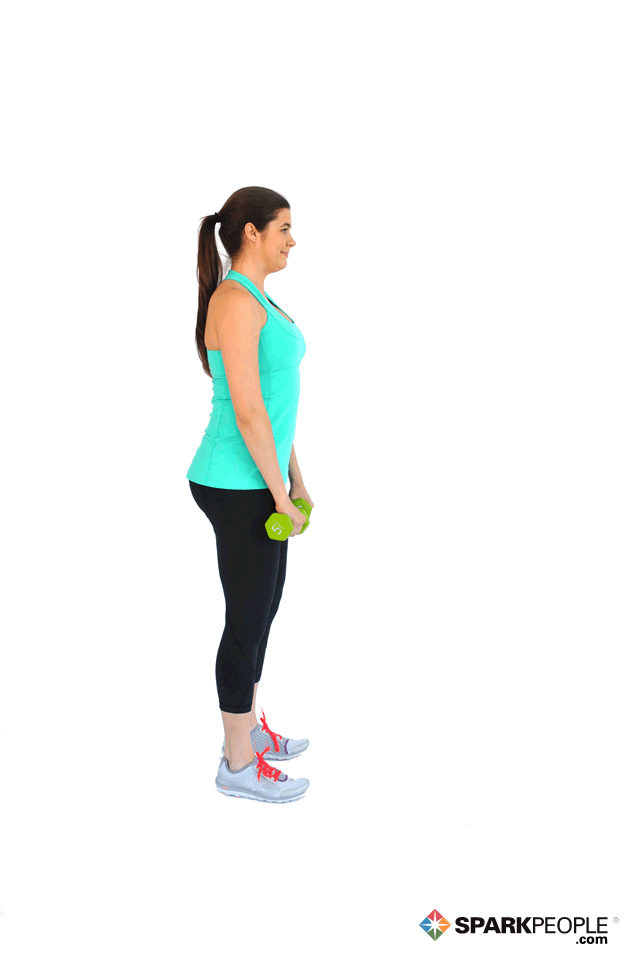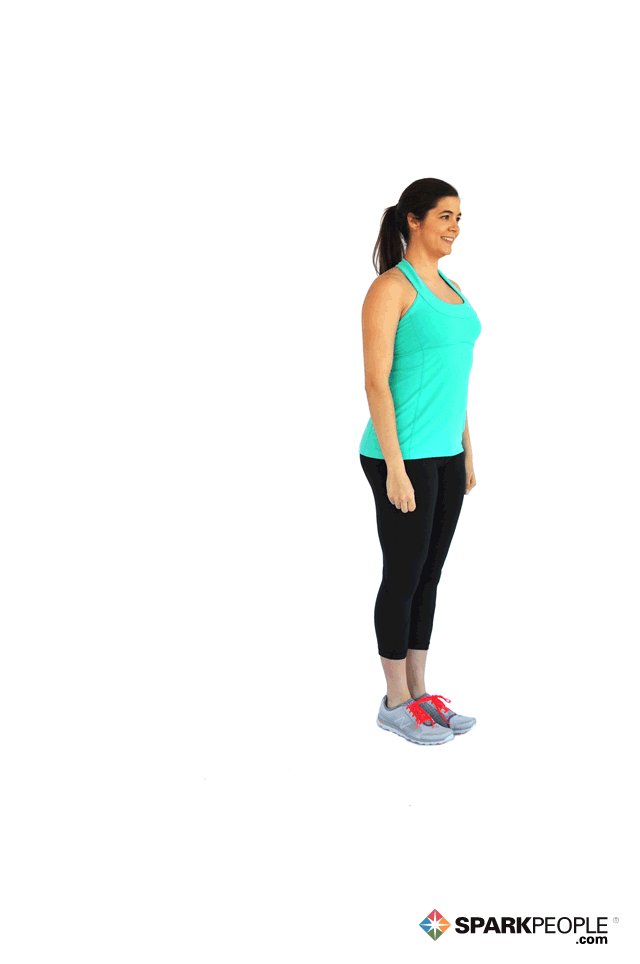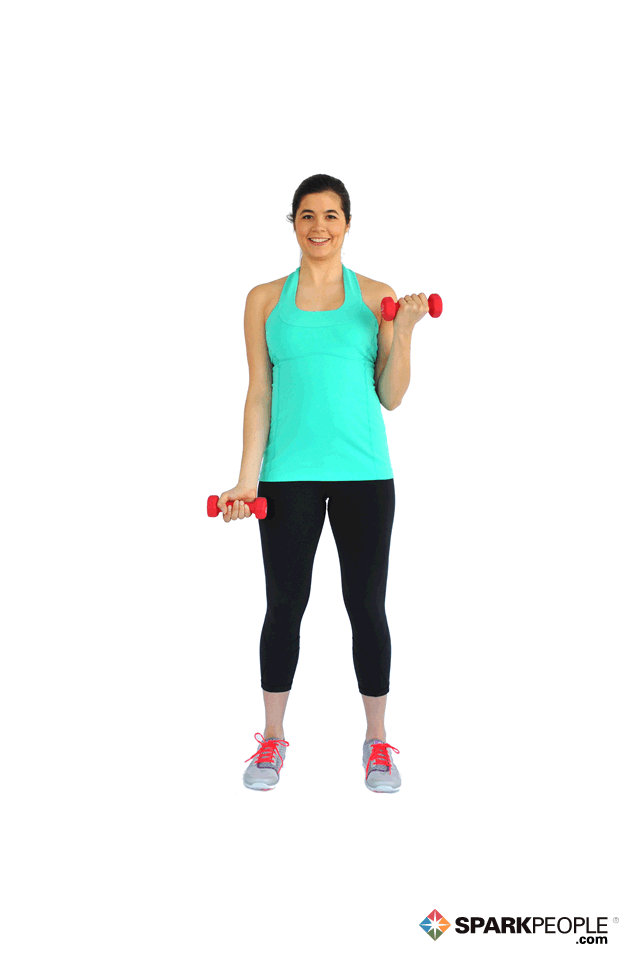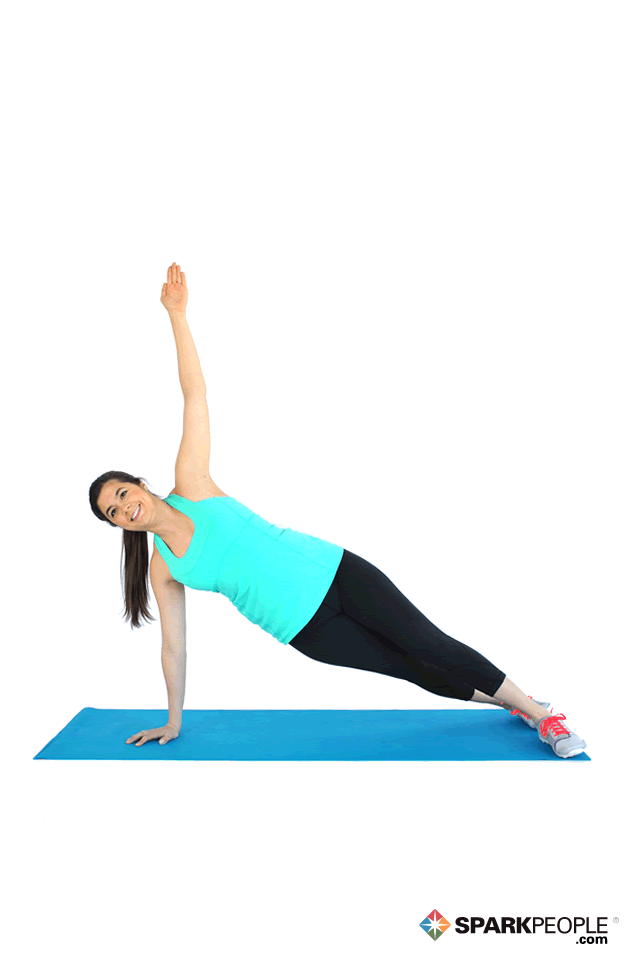Strength training is an important part of any well-rounded exercise routine, but along with it comes a degree of risk. If you aren't performing the exercise correctly, not only are you ruining your results by not targeting the intended muscles in the proper way, but you also risk injury which could derail your progress overall. This is why good form is so crucial.
Mistakes happen and usually it's simply due to a lack of knowing any better. You see moves in a YouTube video or through the window looking in on a boot camp class, but what you don't understand is how posture, proper feet placement, pace and even breathing can affect the move's efficiency and transforming power. Although each exercise seems simple, putting it into practice with additional weight involved can make it even more difficult.
Before you set foot in the weight room, it's important to commit to learning and understanding proper form for a variety of exercises. Whenever possible, use a mirror or ask someone else to check your form to make sure your body is in proper alignment for maximum results.
While every exercise has its own specific form and pacing requirements, there are repeat offenders that challenge people over and over again.
1. Deadlift

What You're Doing Wrong:
- Arching or rounding the back
- Feet wider than shoulder-width apart
- Squatting during the movement
- Positioning the weight too far from the body
Fix Your Form: Feet should be shoulder-width apart to minimize strain on the low back and help keep the shoulders from rounding. Hinge from the hips, keeping the spine neutral. Your head, neck and shoulders should be in line throughout the movement. Movement for this exercise should initiate from the glutes and hamstrings, not the lower back. Knees should have a slight bend, but there should not be any squatting during the movement, which can be common as you return to the starting position. As you progress through the movement, hand weights should be close to (almost touching) the body. Bringing weights out from the body puts pressure on the lower back.
2. Overhead Press

What You're Doing Wrong:
- Back arches
- Weight is pressing up in front of the body
- Knees bounce (when done in a standing position)
- Not using full range of motion
Fix Your Form: The back should be in a neutral position with no arch or movement during the exercise. If you need to arch to get the weight up overhead, the weight is probably too heavy and you should pick a lighter weight to perfect your form first. When you press the weight up, it should be directly overhead so the force is distributed through your spine. Shifting the weight forward puts more pressure on your shoulders and back, which increases the risk of injury. Knees should have a slight bend, but there should be no bouncing, which is typically done to increase momentum help raise the weights. Again, if you need to bounce, the weight likely needs to be decreased. Push weights overhead until the arms are straight and in line with the shoulders, but elbows are not locked.
3. Lateral Lunge

What You're Doing Wrong:
- Stepping too wide
- Knees not in proper alignment
- Weight in the balls of the feet
- Leaning forward at the knee
Fix Your Form: When you step out too wide, it's difficult to align the shinbone over the foot. In this case, it causes the knee to fall to the inside of the foot, putting pressure on the knee. Correct this by taking a smaller step. As you step out, weight should be in the heels (heels flat on the floor) with the butt pushing back. Try to keep your knees aligned over your second toe so that the knee is moving in the same direction as the ankle joint. Sit back into the lunge as the weight shifts toward the foot stepping out so that the movement initiates from your hips, rather than a forward motion at your knee. This will engage your glutes and hips instead of the quads.
4. Biceps Curls

What You're Doing Wrong:
- Positioning the elbows in front of the body
- Arching or leaning back
- Not engaging the core
- Rushing through the movement
Fix Your Form: Lock your elbows at your sides to start so that the biceps are doing all of the work. When the elbows come out in front of the body, the deltoid muscles in the shoulder are engaged, distributing the workload and targeting the biceps less effectively. The back should stay in a neutral, upright position; if the back arches or leans, it's likely because the weight is too heavy. Keep the core tight to help minimize any motion in the back (either forward or back) and stabilize the body. In this exercise, the harder part of the movement is the downward motion (eccentric contraction), so it's important to stay slow and controlled. Bringing the weight up and then swinging it back down risks injury and misses out on an important part of the movement to target the biceps.
5. Side Plank

What You're Doing Wrong:
- Hips sink down
- Weight all in the wrist
- Hand set too far from the body
- Downward rotation of the neck and body
Fix Your Form: The body should be in a straight line from heels to head. If the hips drop, it puts pressure on the lower back and disengages the core. Weight should be evenly distributed between the wrist and feet so that there isn't too much strain on the wrist. Place the hand directly under the shoulder—if it's out too far there it increases the pressure on your shoulder joint and makes balancing more difficult. As you get tired it's easy to let the body start sagging down and in, so make sure the body is facing out. To do this, keep your chest out and fix your gaze on a spot in front of you. If stacking the feet is too challenging right now, stagger them to provide additional balance and support.
Keep in mind that proper form starts with using an appropriate amount of weight. In general, start with one to two sets of each exercise, eight to 12 repetitions per set. The last repetition in the set should be the last one you can do with proper form. If you aren't sure how to do an exercise correctly or if you have questions, consult a qualified professional before you start. This simple outreach prevents bad habits from forming and decreases your risk of injuries that could have been easily prevented.
Lastly, don't compare yourself to others. You know your body and your limits, so don't attempt exercises if you're not ready or don't understand how to do them properly. Most exercises have modifications, so start with a simplified or easier version before attempting more advanced moves.
|
|


























